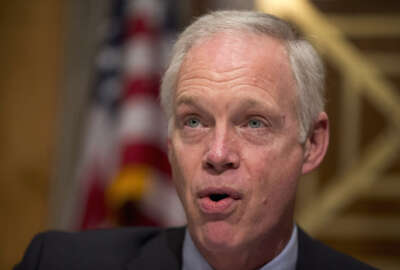
Buyouts, phased retirement: Where have they gone?
Would you leave your government job if offered a $40,000 buyout? Senior Correspondent Mike Causey says don't get your hopes up, but stay tuned, just in case.
When you launch a lead submarine, filled with rocks and a screen door to let in the fresh air, it might not be wise to invite CNN or Fox News to cover the event until you see how well the boat dives and if it can surface. Which brings to mind the fate of two of the most innovative and (supposedly popular) federal personnel programs ever started.
Buyouts (first offered in the 1990s) and phased retirement, which is out there but apparently lost in space as far as most federal agencies are concerned.
Buyouts were developed in the Clinton administration, designed primarily to lure blue-collar, white-male veterans (with job security) into retirement so the large number of women and minorities who had been hired would survive a massive downsizing because of the government’s vets preference and last-hired-first-fired program. Buyouts worked as planned. Thousands of otherwise layoff-proof workers, mainly in the Defense Department, took the $25,000 buyout bait. In some cases, they also took early retirement. The full buyouts were worth $25,000 before deductions. But they were popular because $25k was a tempting offer in those days. But after the first couple of rounds of buyouts, they’ve been a rusty tool in most agency HR and budget offices. Buyouts are most effective if offered early in the fiscal year (October, November, December) and the employees who take them are not replaced.
Last year only a couple of agencies (the Government Publishing Office being one of them) offered a handful of buyouts. Most didn’t use the tool. But that could be about to change. If the Defense Department pushes its plan, and Congress and the White House buy into it, the pay-to-go of the future could be a $40,000 buyout. Again, before deductions. The buyout upgrade is designed to recognize that lots of things — prices and salaries — have changed in the last couple of decades. What was a decent lure back in the day would be considered chump change today by most feds, particularly because the non-federal job market is not all that attractive, especially for people accustomed to getting six-figure salaries. The next round of buyouts, if they come to pass, was first reported by FedWeek. It said the new bigger bucks buyouts are getting serious attention at Defense, which is usually the lead agency in programs like buyouts and early-outs, only this time with a $40,000 reward, designed to account for price and salary increases over the last 20 years. Next, phased retirement. Like what happened?
When the phased retirement program was first proposed, many feds went wild. Agencies seemed to like it too. Many experts say the best way to test and adjust to life in retirement is to do it slowly. Work a couple of days a week and get used to having more free time (and less money). It was sold as a valuable tool to the government since those taking the perk would spend X hours per week mentoring the people who would replace them. It was billed as the greatest idea since sliced bread. Congress mulled it for a long time and then OPM took forever (in some people’s eyes) to come up with guidelines. Those guidelines give agencies lots of leeway . They could more-or-less custom tailor the program to their needs. So what happened? Not much.
Agency responses to phased retirement — now that it is authorized — have been underwhelming. Is everybody waiting for somebody else to start the ball rolling. Or, now that it’s here, is it going nowhere. Clues?
Nearly Useless Factoid
By Michael O’Connell
The inventor of Pong also created the Chuck E. Cheese chain of entertainment restaurants.
Source: Thillist
Copyright © 2025 Federal News Network. All rights reserved. This website is not intended for users located within the European Economic Area.
Mike Causey is senior correspondent for Federal News Network and writes his daily Federal Report column on federal employees’ pay, benefits and retirement.
Follow @mcauseyWFED





